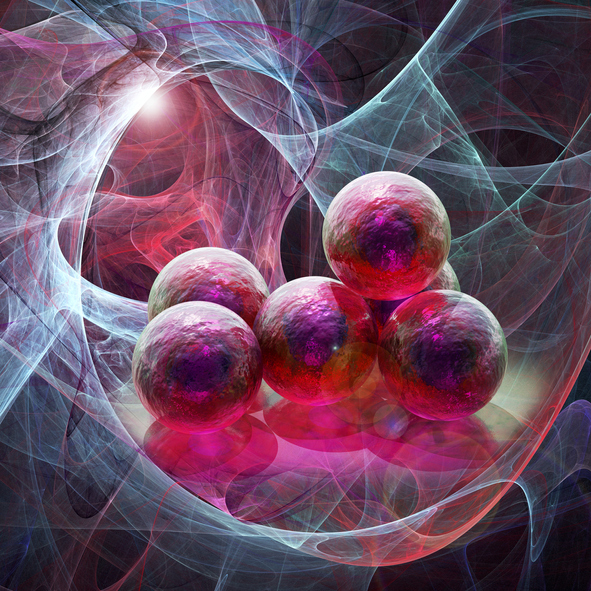
Scientists based at the University of Texas at San Antonio (UTSA) have used single-cell technology to study changes in gene expression that occur in stem cells that differentiate into sperm. The scientists report that they have distinguished 11 cell types on the basis of transcriptomic profiles. Additional work, the scientists suggest, could inform research into male infertility and male contraception. The scientists even expressed optimism that their work could lead to sperm cells being generated in a dish.
“We took a new, cutting-edge approach down to the level of individual cells to understand all the changes in which genes are used to make sperm in the testicles, said Brian Hermann, Ph.D., a biology professor and director of the UTSA Genomics Core. “That previously had not been possible and impedes progress toward a cure for male infertility.”
Dr. Herman is the lead author of an article (“The Mammalian Spermatogenesis Single-Cell Transcriptome, from Spermatogonial Stem Cells to Spermatids”) that appeared November 7 in Cell Reports. The article notes that while patterns of gene expression had been described for aggregates of certain spermatogenic cell types, the full continuum of gene expression patterns underlying ongoing spermatogenesis in steady state had remained unclear.
To address this shortcoming, the team built a comprehensive digital library of the cell types required for sperm production in mice and men. They examined more than 62,000 cells and identified 11 different gene expression profiles; their work even uncovered rare and new cells for which little data was previously reported.
“[Our approach] allowed us to resolve spermatogonial stem cells and progenitor spermatogonia, elucidate the full range of gene expression changes during male meiosis and spermiogenesis, and derive unique gene expression signatures for multiple mouse and human spermatogenic cell types and/or subtypes,” the article’s authors wrote. “These transcriptome datasets provide an information-rich resource for studies of SSCs, male meiosis, testicular cancer, male infertility, or contraceptive development, as well as a gene expression roadmap to be emulated in efforts to achieve spermatogenesis in vitro.”
According to the NIH, reproduction issues in males contribute to at least half of infertility cases among couples. Many cases of male infertility are treated with medication. Some even require surgical procedures. Yet, in almost half of these same cases, the reasons for male infertility are unknown.
UTSA’s digital roadmap was constructed using the sequencing of genes expressed in germ cells. The researchers used high-tech machines which allow scientists to examine tens of thousands of individual cells and produce the library of genes expressed in each cell in one to two days. The method also employed cutting-edge bioinformatics, data analytics that decode gene expression data generated from the cells.
UTSA’s individualized approach to profiling gene expression at the single-cell level is what makes this work different. Previous methods have relied on analyzing groups of cells, but when they are bundled together in experiments, the differences among the individual cells are averaged and therefore obscured. Hence, UTSA’s new approach provides important data that can help uncover the biology underlying how sperm are produced and what may go wrong in men who suffer from infertility.
“This is how we find the needles in the haystack,” noted Dr. Hermann. “We weren’t previously able to separate different cells with different functions, so in order to understand exactly how they are different, we looked at individual single cells, instead of the typical way of grabbing them all in bulk as a group.”
UTSA’s new digital gene expression library offers many scientific applications. It could help improve clinical diagnoses in men with infertility because their gene expression “signatures” will be different than those in the normal men now described in this new database. The UTSA resource can also provide a foundation to help innovate the next generation of male contraception and to even potentially develop sperm outside the body.
The researchers are hopeful that the methodology can also be applied to other biological processes in the body to uncover new information on which to base novel approaches to diagnose, treat, or prevent a wide variety of diseases.
“It’s been a dream for decades to take the most primitive cells in the testis and convert them into sperm in a petri dish, yet this has never worked,” emphasized Dr. Hermann. “If anyone is going to generate sperm cells in a dish, they’d want to know how similar those cells are to those that occur naturally in the body. The data we have generated now provides a reference library for comparison.”



![Metsera Launches with $290M to Develop Next Generation Weight Loss Products Genomenon said today it has partnered with Rhythm Pharmaceuticals to create a database of genetic mutations associated with obesity as documented in published studies. Rhythm plans to use the data to better understand rare genetic disorders of obesity. [Visual Mozart/Getty Images]](https://www.insideprecisionmedicine.com/wp-content/uploads/2019/01/1628-218x150.jpeg)







